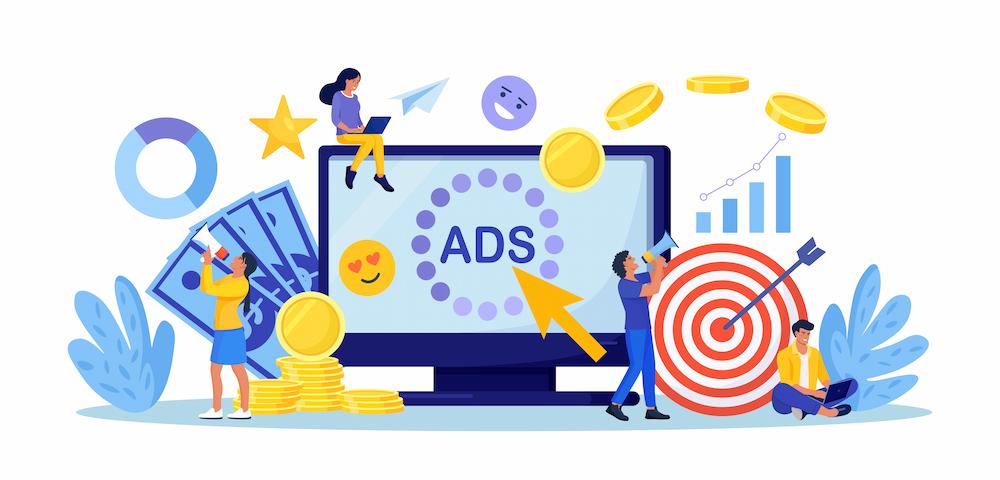Every business needs new leads to stay afloat. Returning customers are great, but new customers are what makes a business grow. PPC Campaigns can double your leads if used correctly. Many business owners like the idea of PPC advertising, but then get muddled in the setup or the data. Luckily, NEXTFLY, an Indianapolis digital marketing agency, explains how to set up PPC campaigns for quality leads and how to make sense of the data you get from your campaigns.
What is a PPC Campaign?
PPC, or Pay-Per-Click, is a form of online advertising where you only pay when someone clicks your ad. These ads often appear at the top of search engines like Google, on social platforms like Facebook and LinkedIn, or across websites through display networks.

How Can PPC Campaigns Increase Leads?
PPC campaigns can drive highly targeted traffic to your site, putting your offer in front of people actively searching for your product or service. When optimized correctly, these campaigns not only increase traffic—but bring in qualified leads who are ready to convert.
An Effective PPC Campaign Casts a Smaller Net, Not A Larger One
By being specific with your ads to target specific customers, you will get better quality results. Let’s use a fishing analogy.
Let’s say you’re going fishing, and you have 2 options for bait. You can use worms, or you can use breadballs. Many different kinds of fish are drawn to worms, but whitefish, in particular, are drawn to breadballs. Now also on this fishing trip, you have two options for tools. A large net, or a fishing pole. While the hungriest person might insist on catching as many fish as possible by using the cheaper bait and the biggest net, the more agile fisherman would rather catch one high-quality fish at a time using specific bait.
This is how PPC campaigns work: you could spend lots of money trying to get the most eyes as possible on your ads, but get few good quality leads. Or, you can refine your ads so they only attract the best possible leads. There are digital marketing strategies that use PPC to focus on awareness, but today, we’re only talking about PPC campaigns for lead generation.
Steps for Making PPC Campaigns to Help You Find More Leads
While many people focus on clicks when it comes to creating PPC campaigns, we want to focus on the number of leads that come from our campaigns. So we want to pay special attention to metrics like CTR (click-through rate), Number of Conversions, CPA (cost per acquisition), and the number of qualified leads.
These metrics can help us see what potential leads are clicking on and where we’re losing them. By making small adjustments to our PPC campaigns, we will see better quality leads over time.
Find The Right Audience With Better Targeting Strategies
Google, Meta, and other search engines and social media companies know a lot about their users. Their data is what helps them best match your ads to potential leads. But making the right connections is what is what creates conversions. Doing some research on your potential target audience is essential before setting up your PPC campaign.
Define a Target Audience
You need to know who you’re talking to. Define demographics like age, gender, location, income level, and buyer intent. Use these personas to craft tailored ad messages and targeting settings.
Long-tail Keywords are Specific to the Searcher
Instead of targeting broad keywords like “real estate,” go for long-tail versions like “3-bedroom homes for sale in Austin.” These terms often have lower competition and higher intent. The higher the intent, and the more specific the search, the better chance you have of getting someone to click.
Implement Geotargeting
If you’re a local Indianapolis business—or have specific service areas—make sure your ads are only shown to people in those regions. This reduces wasted clicks and increases relevance.The more specific you are about your customers, the smaller the net you cast. However, the customers you do catch are more likely to be more valuable to you in the long run.
Appealing Ad Copy
Once your ad is shown, your copy is what gets the click. Write a variety of different ads to see what customers click on. When you get your results, you can tweak your ads to better appeal to your customers. Talk about specific pain points customers might have, to mention how your products are better than the competition.
Use ad extensions like callouts, site links, phone numbers, and structured snippets to give users more reasons to click. These not only make your ad more informative—they make it bigger and more noticeable in the search results.
Write Specific Landing Pages
Don’t send users to your homepage. Create landing pages that match the intent of the keyword and ad. For example, if your ad is about “Free Marketing Consultation,” your landing page should be all about that offer—no distractions.
Don’t set your ads and forget them. Test different ad copy, headlines, images, CTA buttons, and landing pages. Even small changes can have a big impact on conversion rates. Always be optimizing.
Ask Detailed Questions on Forms
Now that someone has clicked your ad and read your landing page, we need to get them to convert. A common way is a form, and the best kinds of forms as the right questions. Anyone can give you their name and phone number, but you need to ask questions that help you qualify leads upfront. Ask for things like budget range, timeline, or service type.
This can really separate the spam from the actual leads while also providing your sales team with better information about the customer’s needs before they make their first phone call. No one likes filling out a long form, so keep your questions short, but impactful to your sales process.
Set Up a Retargeting Campaign
Most people don’t convert on their first visit. Retargeting brings visitors back to your site by showing them ads after they leave. This keeps you top of mind and helps close the deal. Maybe they saw all the great questions on your phone and it caused them to pause and think. They may have left your landing page with a lot of things on their mind, and if they are retargeted with another ad, they might be more prepared to fill it out at a later time.
Has Your Conversion Rate Improved? Let’s Look at the Data
To know if your campaign is really working, you need to track performance metrics. Looking at clicks alone isn’t enough. Looking at multiple key data points can give you a better picture of how your ad is performing.
- Click-Through Rate (CTR): Measures ad relevance
- Cost Per Conversion (CPC): Tracks how much you’re spending for each lead
- Number of Conversions: Total number of leads generated
- Qualified Leads: Are they a good fit for your business?
Then, dive into your Cost Per Acquisition (CPA)—how much you’re spending to acquire each paying customer. If you’re getting a strong return, it’s time to scale your budget and amplify what’s working.
Start Doubling Your Leads By Calling NEXTFLY® To Set Up Your PPC Campaigns
PPC campaigns offer one of the fastest and most measurable ways to increase your leads—if you build them the right way. By targeting the right keywords, writing irresistible ads, creating focused landing pages, and constantly optimizing with data, you can double your leads and grow your business smarter. All this data and creativity can be confusing, that’s where having an experienced Indianapolis digital marketing agency can help. NEXTFLY can help roll out PPC campaigns to generate leads for your business. Give us a call today to learn more.
